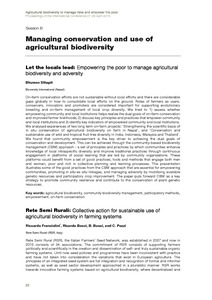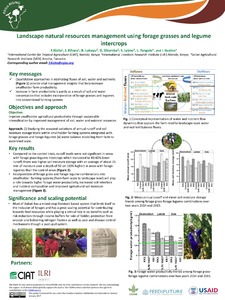Sistemas de explotación
AGROVOC URI:
Limpopo Basin Development Challenge
Limpopo Basin
The Limpopo is a relatively dry basin and most water in the more productive areas is already claimed. Rainfall is highly variable and in many parts of the basin there is little run-off with which to produce crops and livestock. The basin is a water-scarce environment in which recurring drought and floods cause devastating impacts on the livelihoods of small-scale, subsistence farmers. However, the more pressing development challenge in these farming systems is the unproductive use of water in the more normal rainfall seasons which are much more prevalent.
Linking Knowledge: A Qualitative Analysis of Gender and IWRM-related Policies in the Upper East Region of Ghana
While this study was originally conducted to gather baseline data on the general activities, issues, and concerns of women in the Upper East Region in northern Ghana, the initial data collection led to the discovery that women in the Upper East Region are organized, either by their own accord or through the recommendation of local governing bodies, in social groupings that fulfill specific needs such as access to credit, access to agricultural inputs, and access to reciprocal labor and support.
La recherche sur les systemes agraires ("RSA") au CIPEA
Discusses the historical context of ILCA's research, the principal types of animal production systems and the stages in ILCA's farming systems research. Describes the smallholder farming in the Ethiopian highlands & humid zone, the agropastoralists of the sub-humid zone, systems research in pastoral areas of eastern Africa (Kenya & Ethiopia), characteristics of the arid and semi-arid zones of West Africa and the role of modelling in the system. Ends with a summary of past experience.
Land use systems and dynamics in Pucallpa, Peru
Is the Quesungual System an option for smallholders in dry hillside agroecosystems?
Irrigation as a source of drinking water: Is safe use possible?
Published in ?Tropical Medicine and International Health, Vol.6, No.1, pp.46-54, January 2001.? The complete article is available on the CD-ROM version of this Annual Report.
Irrigation-induced river salinization: five major irrigated basins in the arid zone
This publication reports on a study of the increase in river salinity and the implemented control programs in five major irrigated basins in the arid zone. The study is limited to salinity.







